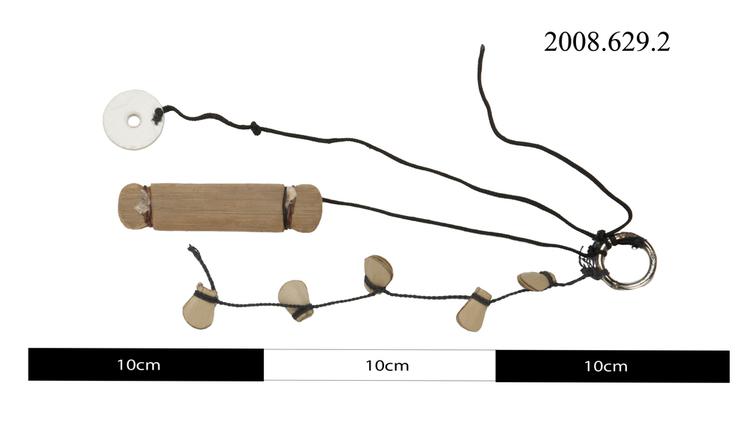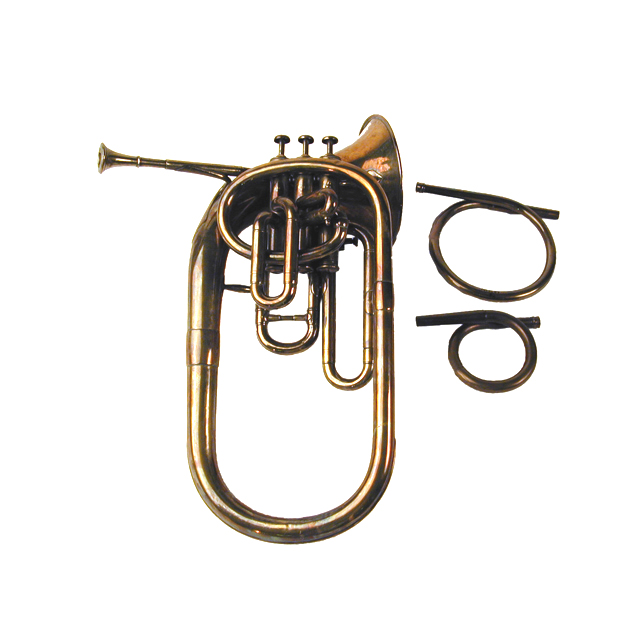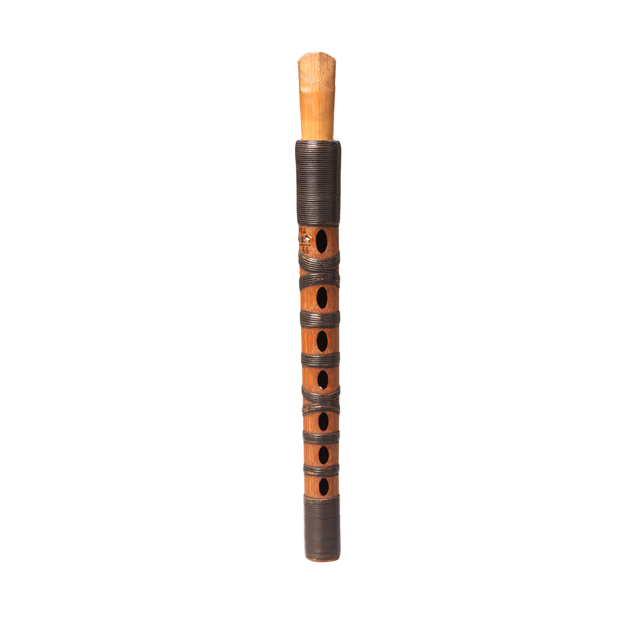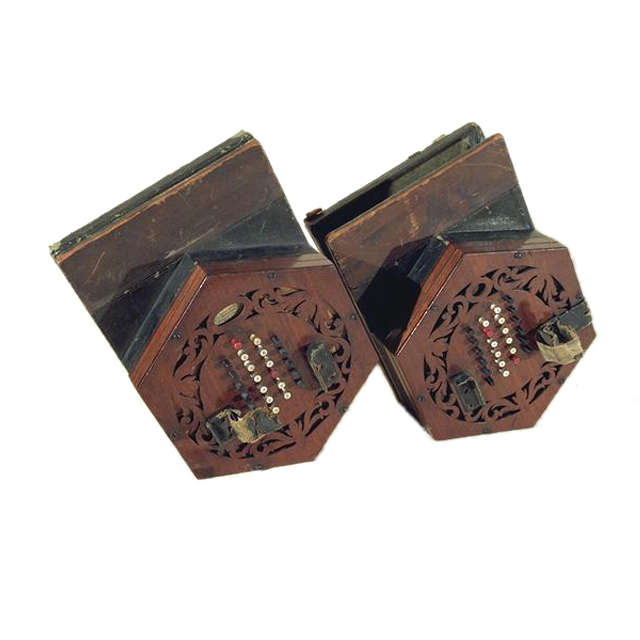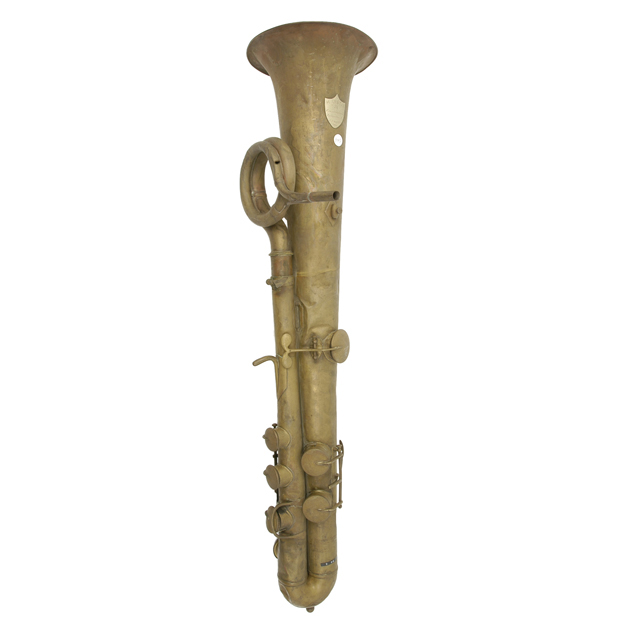
Bass ophicleide in C. Brass body, bell garland and keys. Eleven pillar mounted keys (one missing) with leather pads. Tone holes are conical and raised up to 18 mm above the main tube. The E flat key (right thumb) covers two holes 85 mm apart. Socket for music card holder on bell. Coiled crook. Mouthpiece missing. White metal maker's plaque on bell (possibly silver) is stamped: H.DISTIN/31/Cranbourn St./Leicester Sq./LONDON/394
The ophicleide is a lip activated wind instrument (so it is classified as a brass instrument) with a key mechanism to enable it to play different notes. Historically it is closely related to the keyed bugle and is sometimes described as the bass member of the keyed bugle family. However, from an early point in its history the ophicleide developed a completely separate identity outside of military service. The bass ophicleide in C was used by many composers in France and Germany as the bass instrument in the brass section of the orchestra and it was also popular as the bass instrument in brass bands. It was eventually replaced in both contexts by the tuba, but has enjoyed something of a revival in the 20th century in the period performance movement, which has reclaimed some of the ophicleide's bass lines in works such as Mendelssohn's Midsummer Night's Dream Overture and Berlioz' Symphonie Fantastique.



